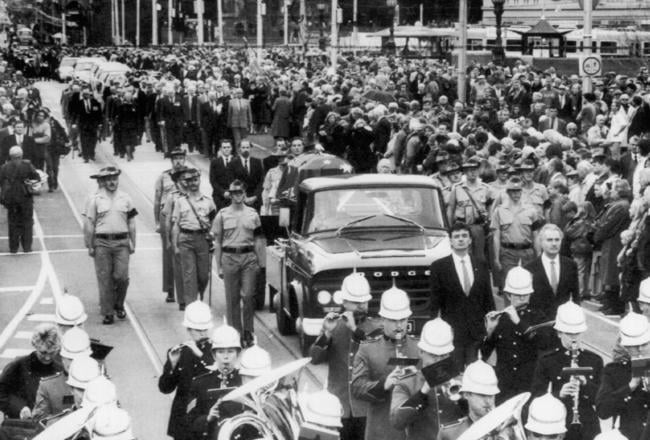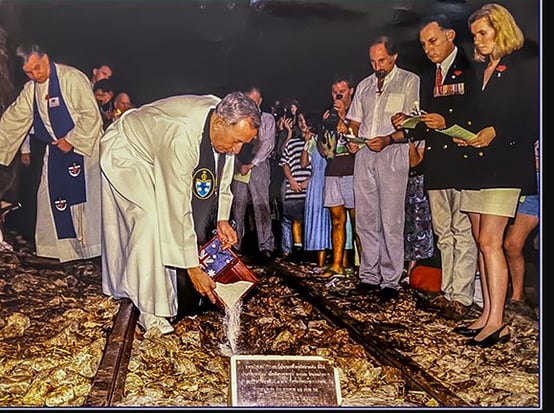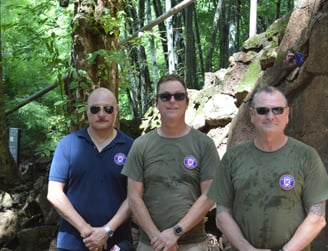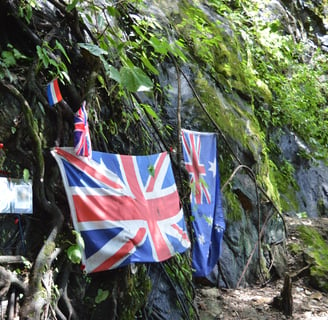
Hell Fire Pass and Weary Dunlop's Ashes
You didn’t come this far to stop
Episode 14: Hell Fire Pass and Weary Dunlop's Ashes
Sir Edward "Weary" Dunlop, a revered Australian surgeon and war hero, passed away on July 2, 1993, at the age of 85, after suffering a stroke at his home in Toorak, Melbourne. Known for his leadership and compassion during World War II, he dedicated himself to his fellow prisoners of war on the Burma-Thailand Railway.
DUNLOPS RESEARCH TRIP 1WEARY DUNLOP TRAILWW2 HISTORY
toursofwar
1/27/20243 min read
In this episode, the St Andrews team pays their respects to their patron, Sir Edward "Weary" Dunlop, at the site where his ashes were laid after his passing. They visit the Hellfire Pass, where a portion of his ashes were interred, and reflect on the significance of this moment in their journey along the Weary Dunlop Trail.
His State Funeral in Australia
Although the St Andrews team was not present at Sir Edward "Weary" Dunlop's state funeral, they paid homage to their patron by visiting the sites that held significance in his life and legacy. The team recognized the importance of honoring Dunlop's memory and the sacrifices he made during the war


Laying his Ashes at Hellfire Pass
On April 25, 1994, a portion of Sir Edward "Weary" Dunlop's ashes were scattered at Thailand's Hellfire Pass and Kwae Noi River, a poignant tribute to his enduring legacy and the sacrifices made during the construction of the railway. The St Andrews team visited these sites to pay their respects and reflect on the significance of Dunlop's life.


Significance of the Service at Hellfire Pass
The service at Hellfire Pass to scatter Sir Edward "Weary" Dunlop's ashes was a profound moment for the St Andrews team and all who admired his life. Hellfire Pass, where he and fellow POWs endured unimaginable conditions, holds a special place in his story and serves as a powerful symbol of resilience. The team's visit to this site allowed them to connect with Dunlop's experiences and honor his memory.


The Weary Dunlop Park
Visitors can find the Weary Dunlop Park, a tribute to the Australian POW surgeon, on the way to Hellfire Pass – a short distance downstream from the former site of Konyu River camp and accessible from Highway 323 just south of the entrance to Hellfire Pass Memorial Museum. This park stands as a reminder of Dunlop's dedication and the sacrifices made by those who worked on the railway.


Interesting Facts
Dunlop's Leadership: Dunlop was appointed to medical headquarters in the Middle East, where he developed the mobile surgical unit. He liaised with forward medical units and Allied headquarters, and at Tobruk, he was a surgeon until the Australian Divisions were withdrawn for home defense.
Dunlop's Heroism: Dunlop defied his captors, gave hope to the sick, and eased the anguish of the dying. His example was one of the reasons why Australian survival rates were higher than those of other Allied prisoners of war.
Hellfire Pass Conditions: The pass was called Hellfire Pass because the sight of the prisoners working through the night under the flickering torchlight resembled a scene from Dante's Inferno.
POW Experiences: The prisoners were forced to work 18 hours a day to complete the cutting, with 69 men beaten to death by Japanese guards in the six weeks it took to build the cutting. Many more died from cholera, dysentery, starvation, and exhaustion


Conclusion
The St Andrews team's visit to Hellfire Pass and the sites associated with Sir Edward "Weary" Dunlop's life and legacy was a poignant moment in their journey along the Weary Dunlop Trail. Although they were not present at his state funeral, the team paid homage to their patron by visiting the places that held significance in his story, allowing them to honor a remarkable individual who exemplified courage and compassion.
